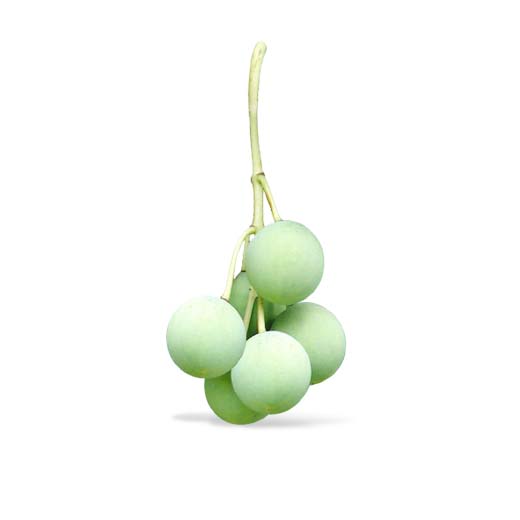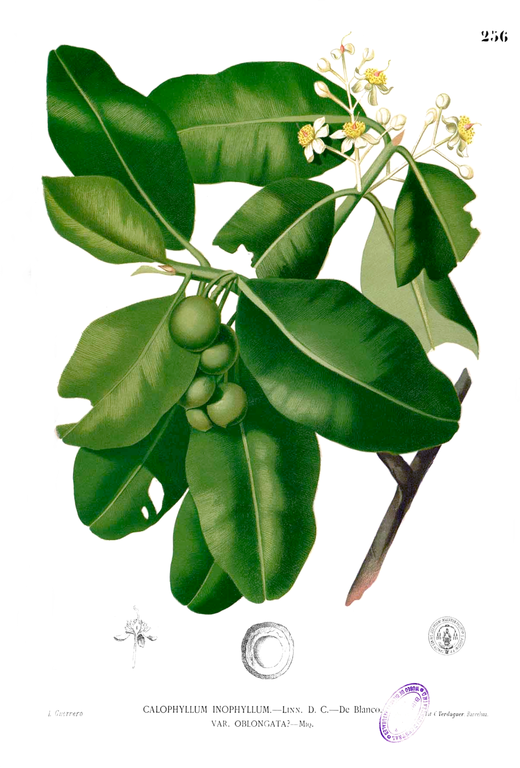Tamanu.us
Pure and Organic from CAOH.COM

Tamanu.usPure and Organic from CAOH.COM |
 |
Tamanu Oil has a wide range of skin care benefits. However, even for those people who are aware of the incredible curative and restorative properties of this ancient oil, very few realize that it is also very effective in reducing or completely eliminating age spots.
Although indigenous peoples of Polynesia discovered this natural skin care remedy many centuries ago, it is only in recent times that Tamanu Oil has begun to attract serious attention from the cosmetic community.
One thing is for certain – Tamanu Oil is now at the cutting edge of a new wave of emerging skin care products.
California Academy of Health’s search for the most potent natural products has led us to the tropical island archipelago of Vanuatu where tamanu, an oil rich in antioxidants, is produced.
Tamanu, as it is known by native Tahitians, is a sacred oil used for centuries to naturally treat skin irritations and promote wound healing and regeneration of new skin. Tamanu oil also possesses natural antibacterial and antifungal properties and has demonstrated efficacy against various human and animal pathogens.
As early as 1918, French researchers investigated the unique topical benefits of tamanu oil. Traditionally, the oil has been used by Pacific islanders on cuts, sores, burns, blemishes, rashes, bites and stings. Tamanu oil contains three basic classes of lipids: neutral lipids, glycolipids, and phospholipids. Tamanu oil also contains a unique fatty acid called calophyllic acid, and a novel immune supportive and anti-inflammatory agent called calophyllolide which promotes the formation of new, healthy skin. Tamanu is not only topically immune supportive, it is anti-inflammatory on the skin as well. Modern applications of tamanu oil are in the forms of advanced skin care products, anti-wrinkle creams, and lotions.

Due to its cicatrizing*, anti-inflammatory, and antimicrobial activities, oil of tamanu is a versatile topical aid suitable for use in a broad range of skin conditions. Tamanu oil can be applied undiluted directly to the skin. There are no reports of adverse effects due to such application of tamanu.
*Tamanu oil possesses the capacity to promote the formation of new tissue when applied to wounds or skin abrasions, thereby accelerating healing and the growth of healthy skin. This process of wound healing forming new tissue is known as cicatrization.
Chevalier J. Study on a new cicatrizing agent for cutaneous and mucous wounds, oil of Calophyllum inophyllum [doctoral thesis]. Paris, France: Institut de Biologie Normale Superieure; October 1951.
Tamanu oil possesses remarkable antimicrobial characteristics, as proven in actual antibacterial and antifungal tests. It contains powerful bactericide and fungicide agents that defeat human and animal pathogens. Tamanu can be applied directly to skin, undiluted. There are no reports of adverse effects from topical application.
The average Ati Tree may produce over 200 pounds of Tamanu nuts per year netting about 10 pounds of pure tamanu oil. The limited production of oil per tree, high cost of extraction and purification, and the very expensive freight from Tahiti, explain why tamanu oil is a fairly expensive and limited commodity.
First the fruits containing the nuts are cracked and naturally sun dried for approximately 4-6 weeks. During this drying process the kernel turns a deep, dark brown and becomes sticky, now rich in oil. The kernel is now ready and is mechanically cold-pressed to extract the precious oil. The resulting tamanu oil has a rich texture and has a greenish-amber color.
A number of scientific studies regarding tamanu oil have been published in Europe and the U.S.
Cox PA, Banack SA. Islands, Plants and Polynesians. Portland, Oregon: Dioscorides Press; 1991:52.
Petard P. Tahiti-Polynesian medicinal plants and Tahitian remedies. Noumea, New Caledonia: South Pacific Commission; 1972.
Pillai SN, Desai MV, Shah HM. Antihelminthic properties of punnakai cake (Calophyllum inophyllum). Indian Journal of Mycology and Plant Pathology. 1974;4(2):145-50.
Whistler WA. Tongan Herbal Medicine. Honolulu: University of Hawaii Press; 1992.
Jeanson M. Anti-leprous plants not belonging to the Flacourtiaceae family [in French]. Bulletin of National Society of Acclimation on France, 1938.
Chevalier J. Study on a new cicatrizing agent for cutaneous and mucous wounds, oil of Calophyllum inophyllum [doctoral thesis]. Paris, France: Institut de Biologie Normale Superieure; October 1951.
Arora RB, Mathur CN, Seth SDH. Calophylloide, a complex coumarin anticoagulant from Calophyllum inophyllum Lin. Journal Of Pharmacy and Pharmacology 1962;14:534.
Bhalla TN, Saxena RC, Nigam SK, Misra G, Bhargava KP. Calophyllolide: a new nonsteroidal anti-inflammatory agent. Indian J Med Res. November 1980;72:762-5.
Bhushan B, Rangaswami S, Seshadri TR. Calaustralin, a new 4-phenylcoumarin from the seed oil of Calophyllum inophyllum Linn. Indian Journal of Chemistry. July 1975;13:746-7.
Gopalakrishnan C, Shankaranarayanan D, Nazimudeen SK, Viswanathan S, Kameswaran L. Anti-inflammatory and C.N.S. depressant activities of xanthones from Calophyllum inophyllum and Mesua ferrea. Indian Journal of Pharmacology. 1980;12(3):181-91.
Saxena RC, Nath R, Nigam SK, Bhargava KP. Effect of calophyllolide, a non-steroidal anti-inflammatory agent, on capillary permeability. Journal of Medicinal Plant Research. 1982;44:246-8.
Goh SH, Jantan I, Ibrahim J. A xanthone from Calophyllum inophyllum. Phytochemistry. 1991;30(1):366-7.
Mahmud S, Rizwani GR, Ahmad M, Ali S, Perveen S, Ahmad VU. Antimicrobial studies on fractions and pure compounds of Calophyllum inophyllum Linn. Pakistan Journal of Pharmacology. July 1998;15(2):13-25.
Sundaram BM, Gopalkrishnan C, Subramanian S. Antibacterial activity of xanthones from Calophyllum inophyllum L. Arogya Journal of Health Science. 1986;XII:48-9.
Hemavathy J, Prabhakar JV. Lipid composition of Calophyllum inophyllum kernel. Journal of the American Oil Chemists Society. December 1990;67(12): 955-7.
Wheatley JI. A Guide to the Common Trees of Vanuatu. Port Vila, Vanuatu: Department of Forestry; 1992.
Abbott IA. La au Hawaii, Traditional Hawaiian Uses Of Plants. Honolulu: Bishop Museum Press; 1992.
Sidi E. Oil of Calophyllum inophyllum in dermatology. La vie medicale. May 1955:82-8.
Pocidalo JJ, Chaslot M. Oil of Calophyllum inophyllum on experimental burns [separate report]. Communication of the Society of Biology February 12, 1955.
U.S. Department of Agriculture, Agricultural Research Service. Dr. Duke s Phytochemical and Ethnobotanical Databases Web site. Available at: <www.ars-grin.gov/cgi-bin/duke/chem-activities.pl>. Accessed October 3, 2003.
Medical Microbiology and Infectious Diseases database Bugs Index Web site. Available at: <www.medinfo.ufl.edu/ year2/mmid/bms5300/bugs/>. Accessed October 3, 2003.
Lederer E, Dietrich P, Polonsky J. On the chemical constitution of calophylloide and calophyllic acid from the nuts of Calophyllum inophyllum. Bulletin of the French Chemical Society. 1953;5:546-9.
|
CAOH Tamanu - Organic Tamnau Since 2004 39785 Avenida Sarita Temecula, CA 92592 Phone: 800-643-7188 Email: [email protected] |
 |